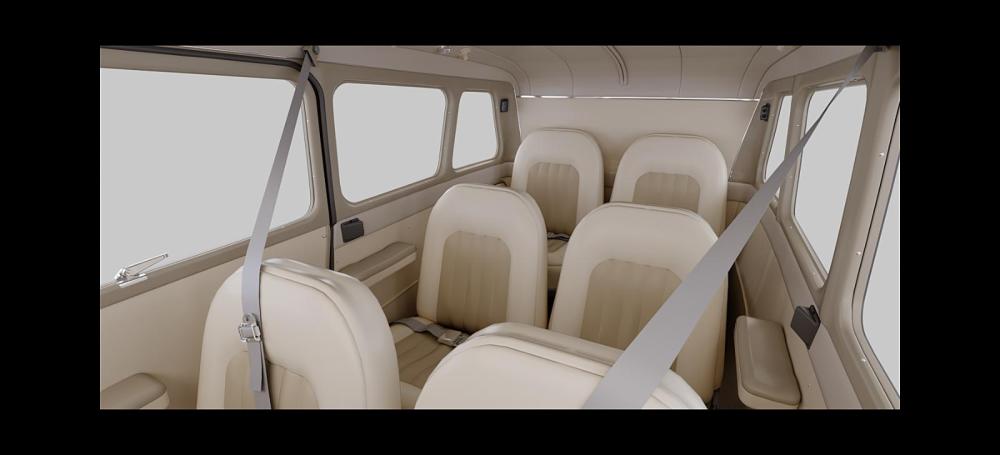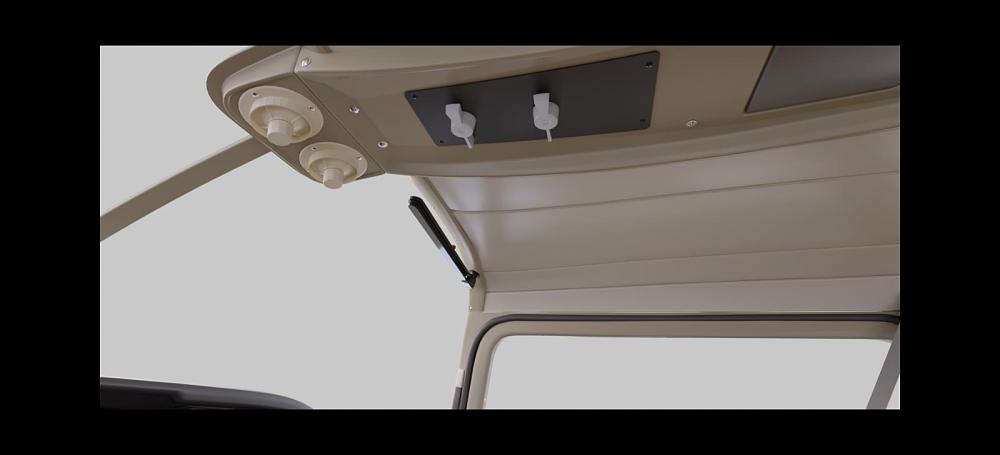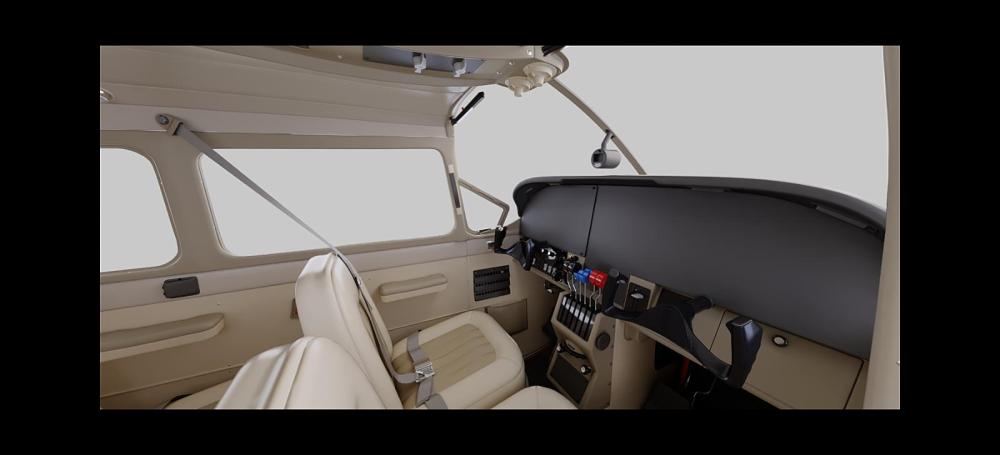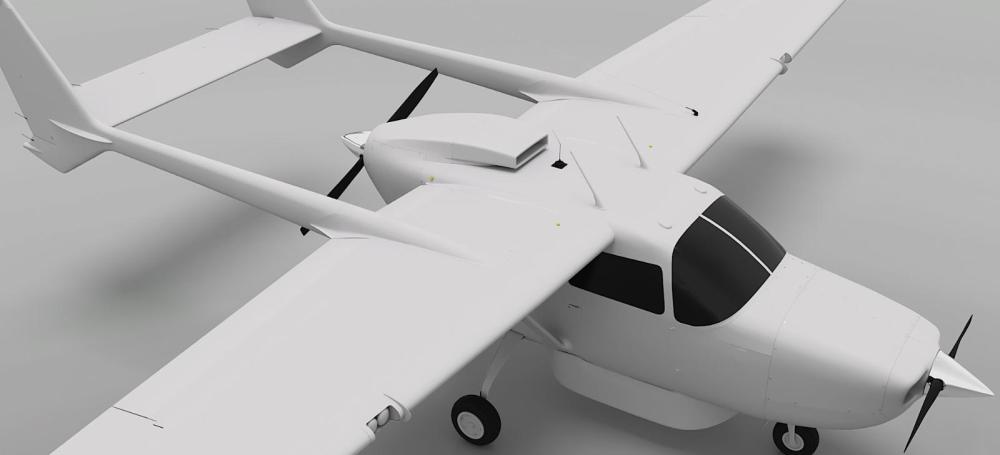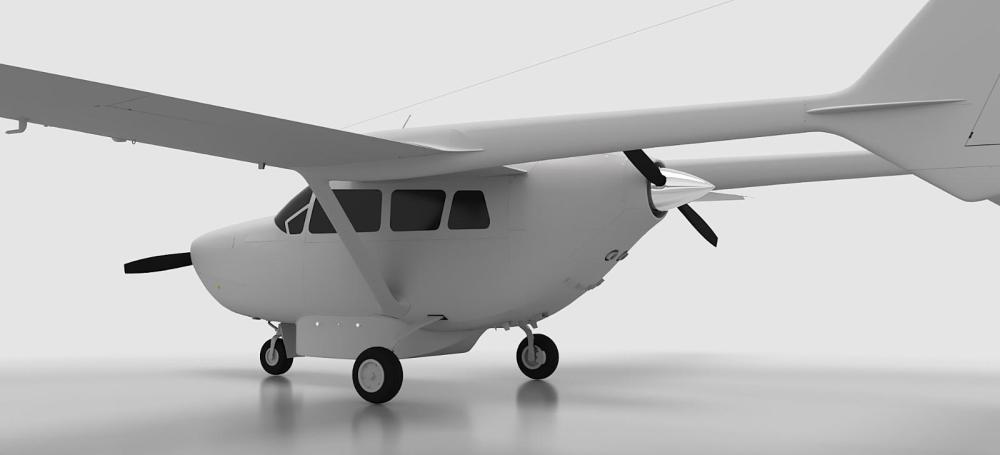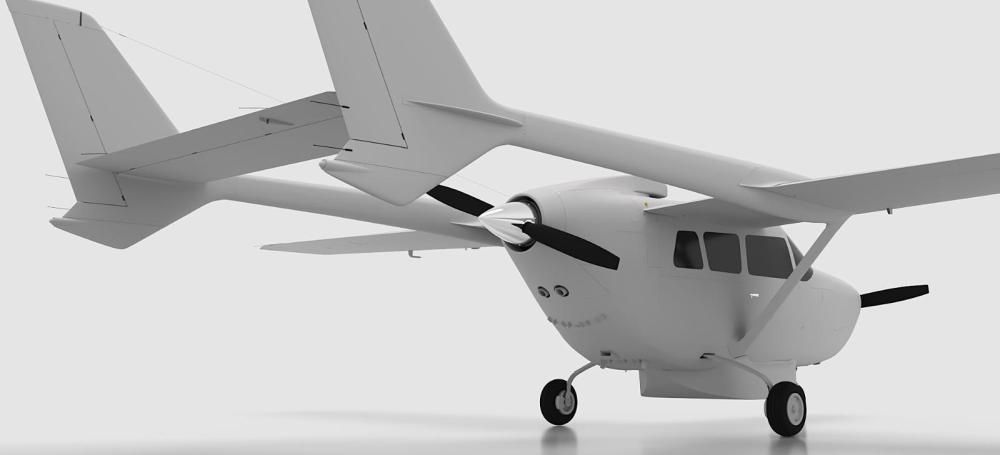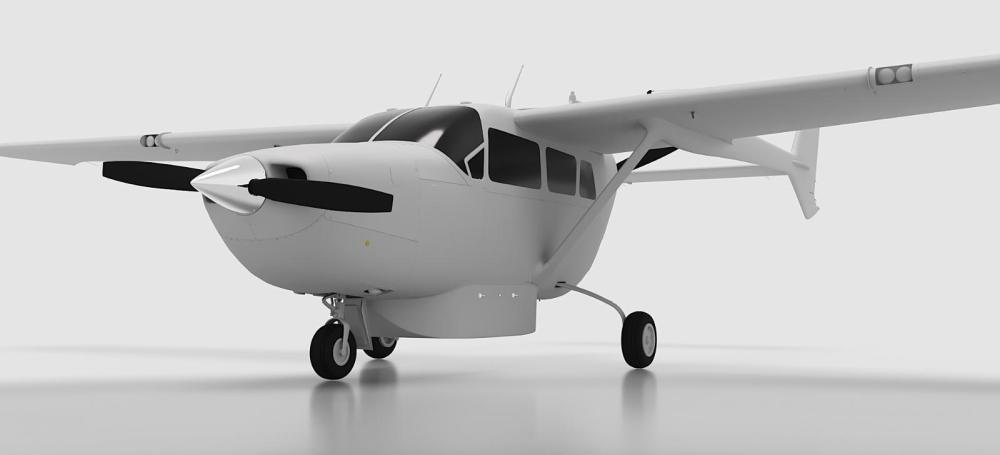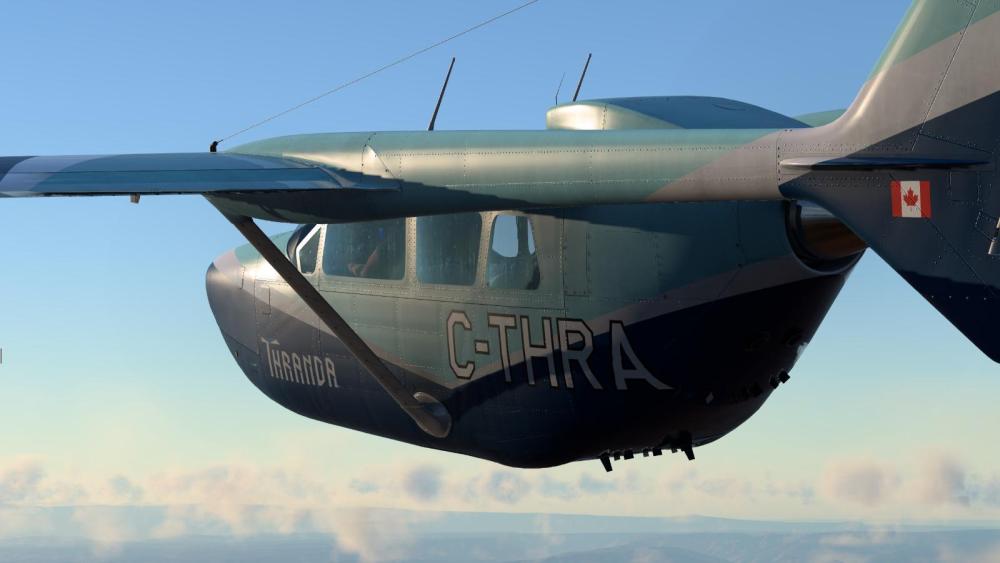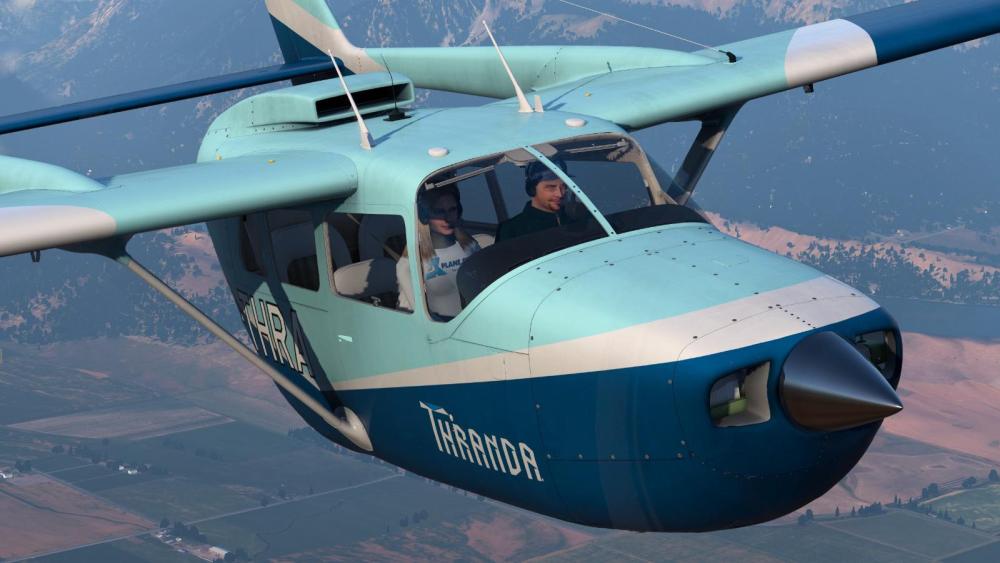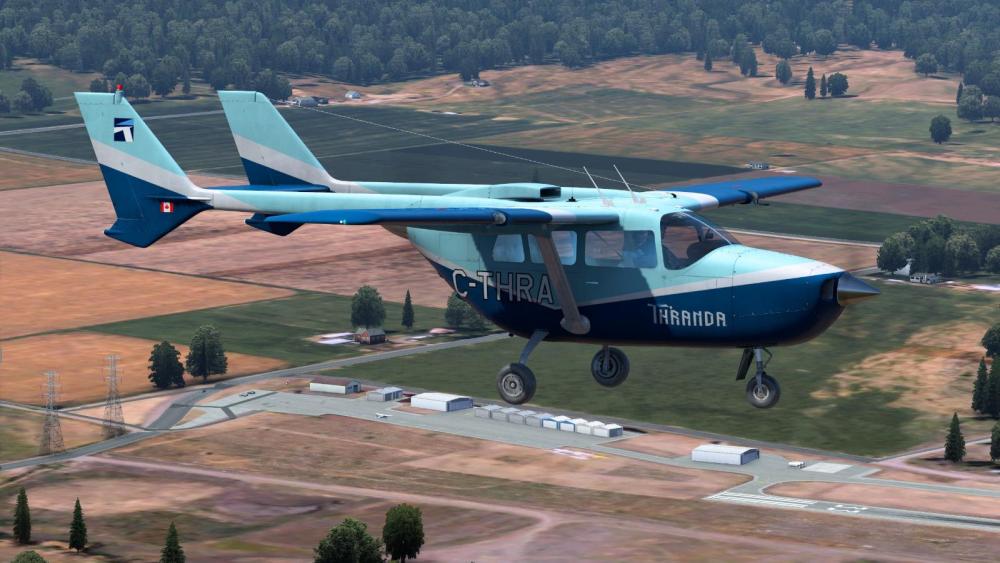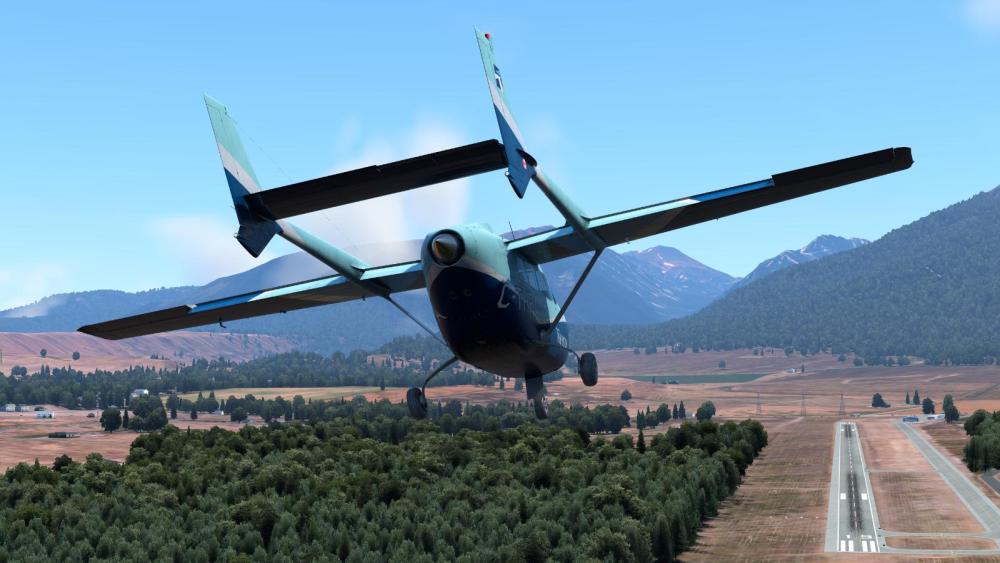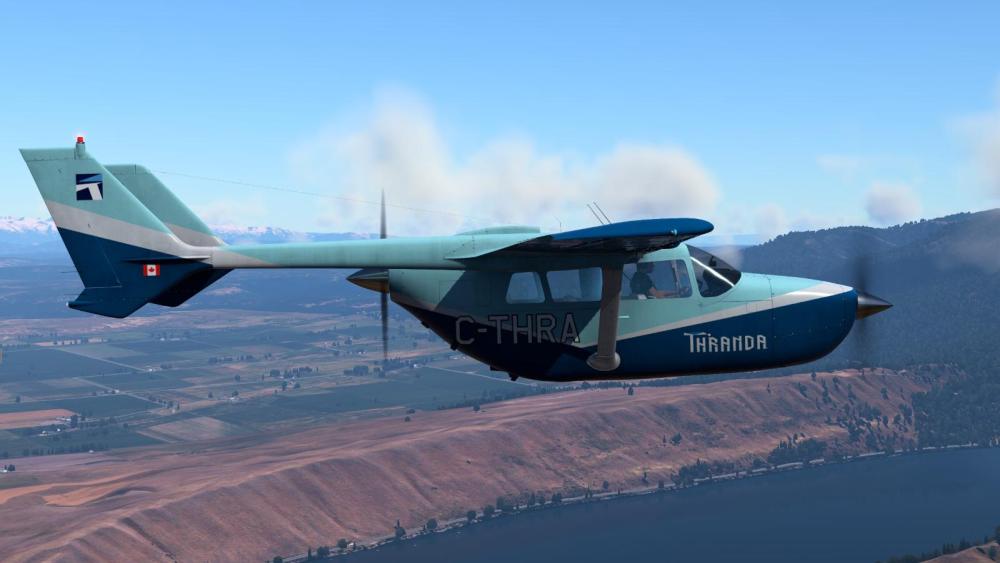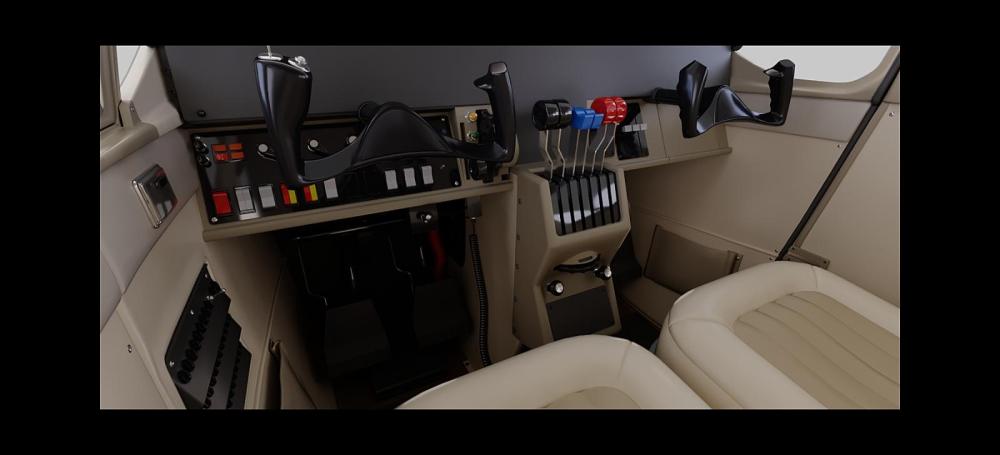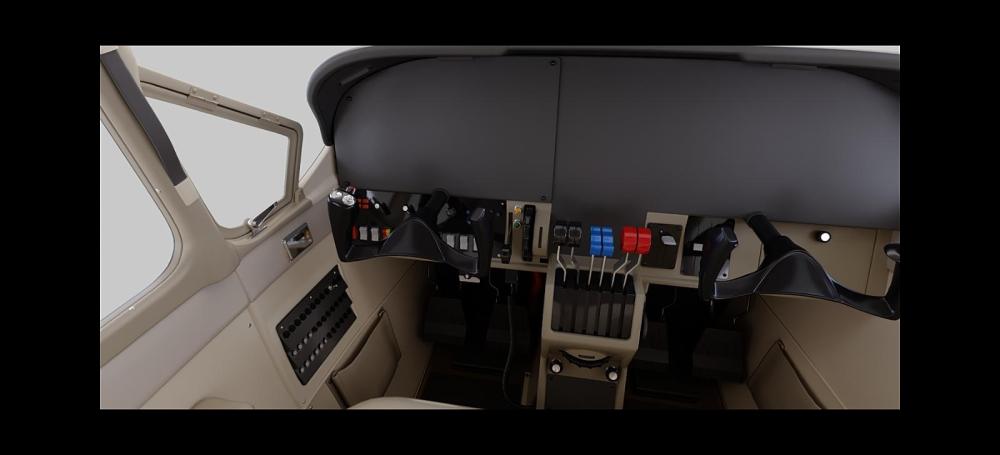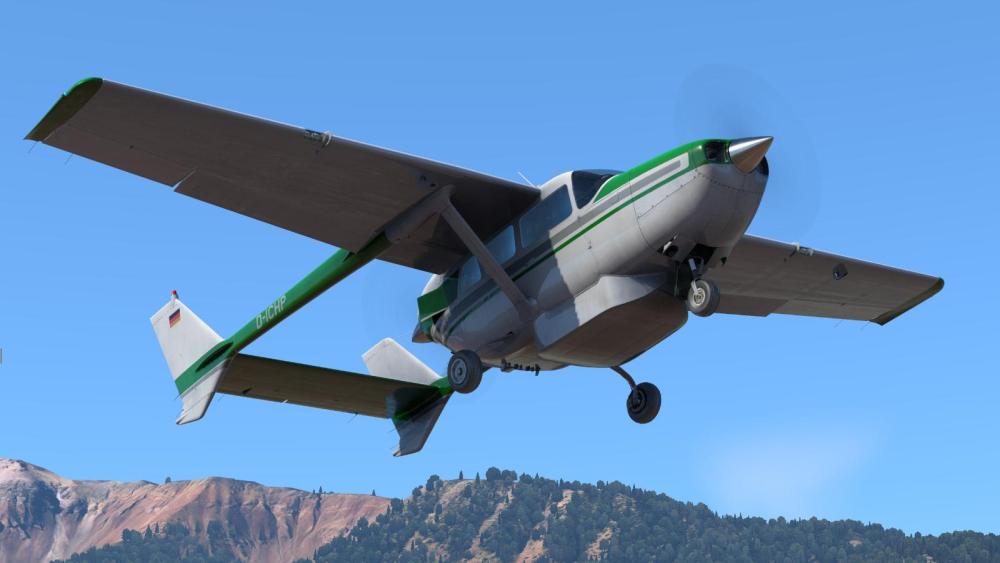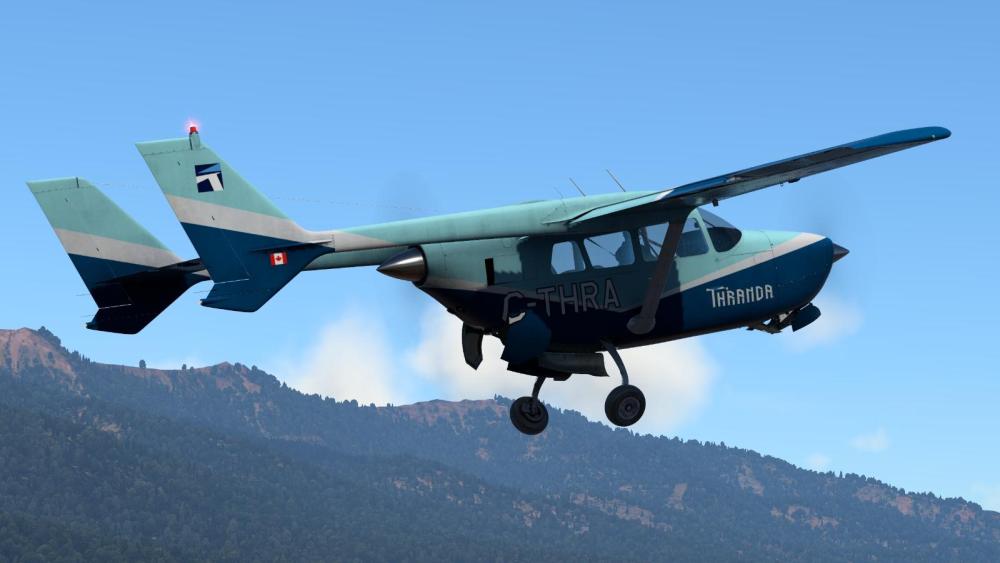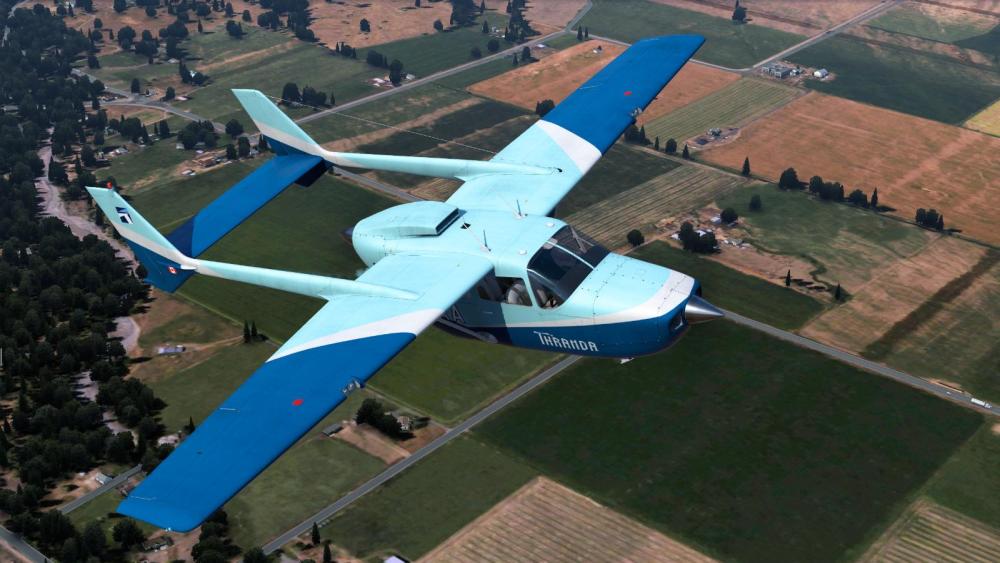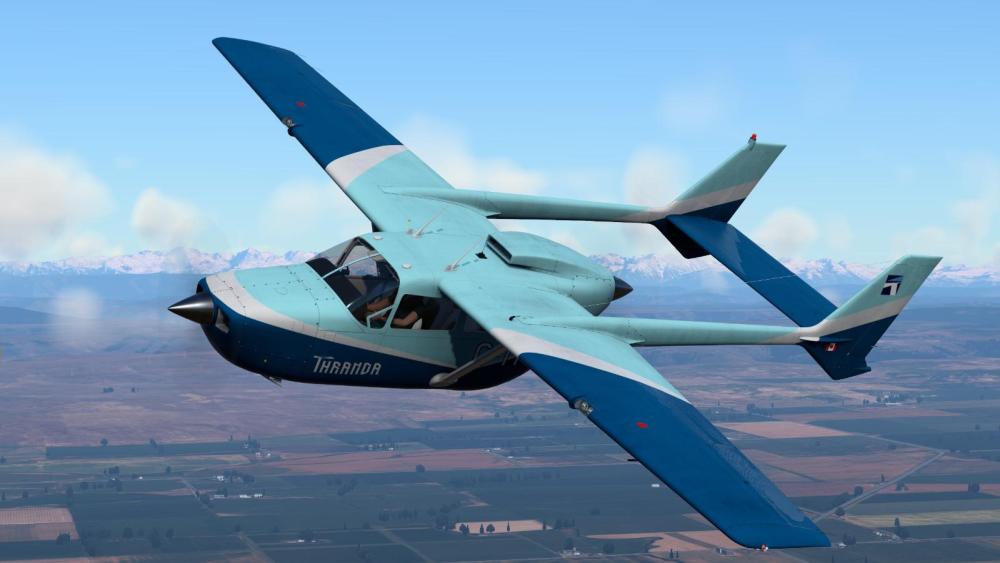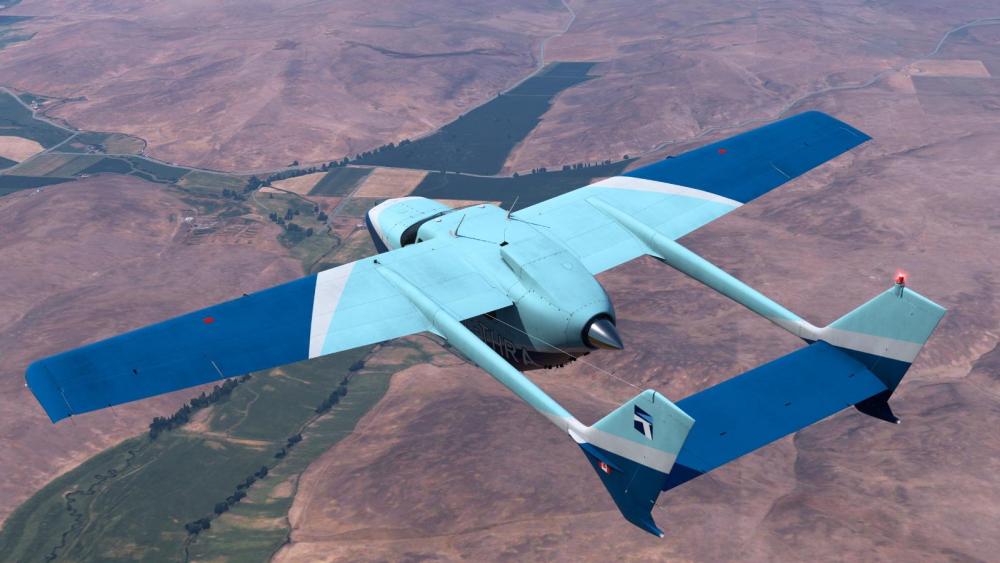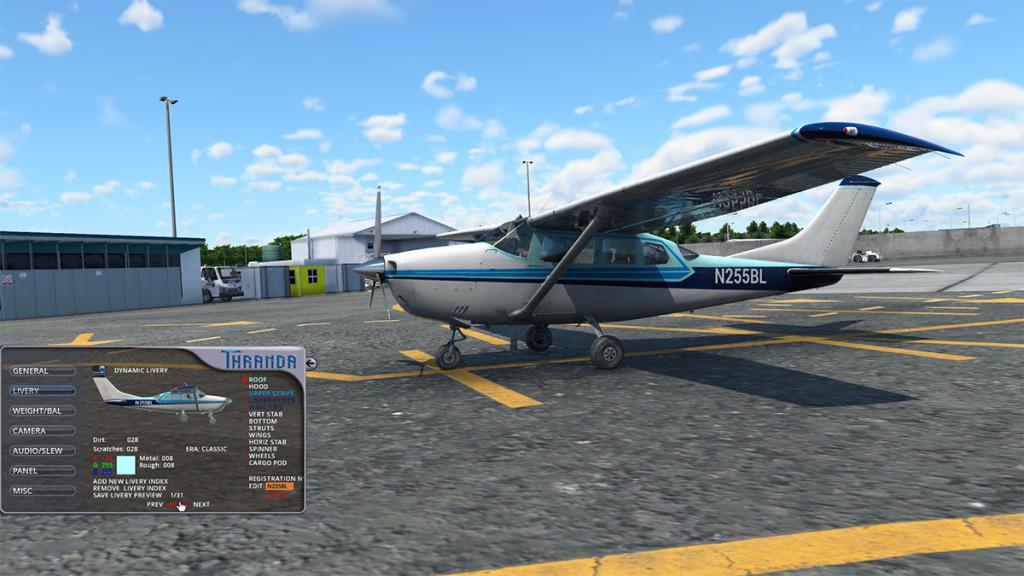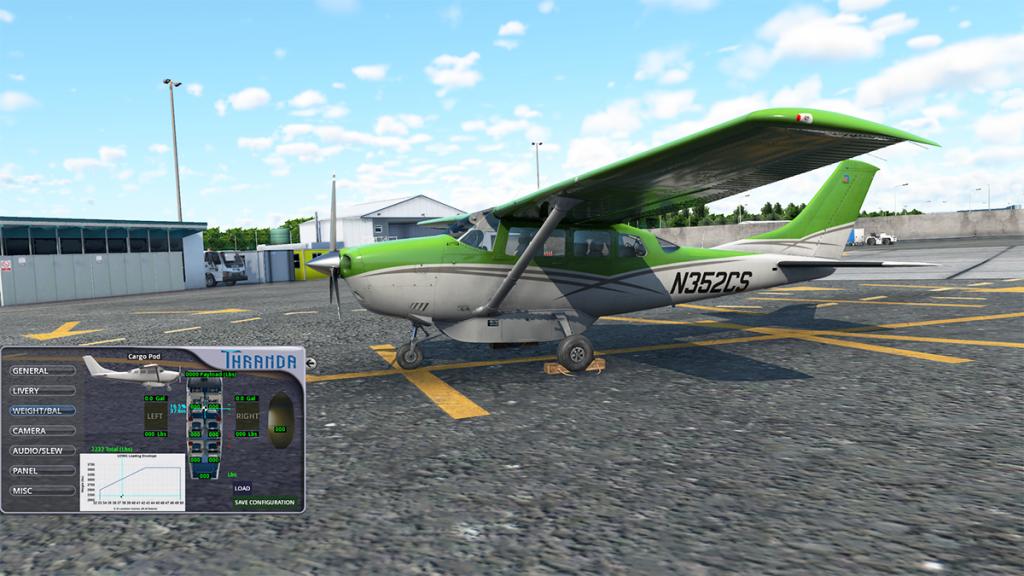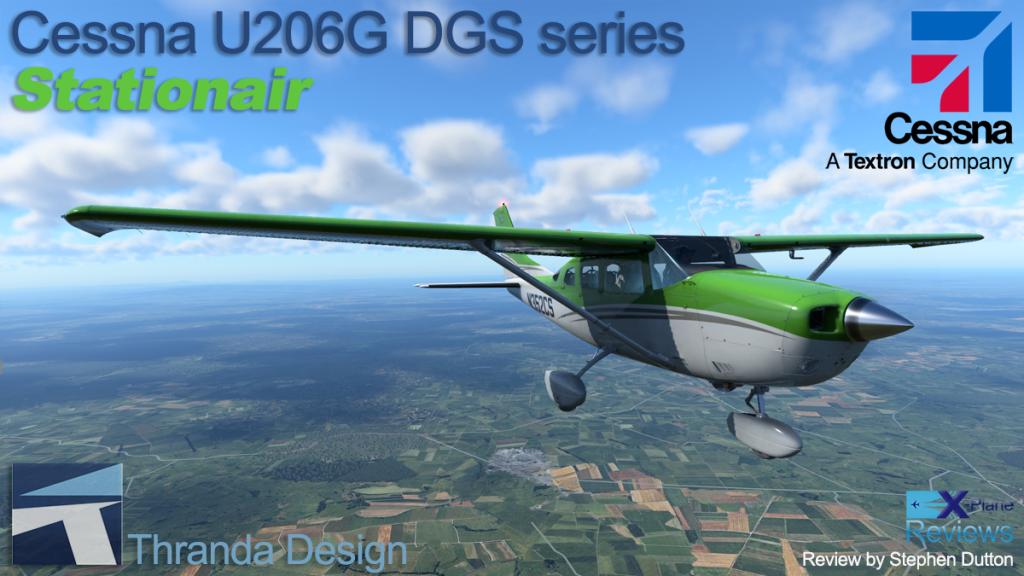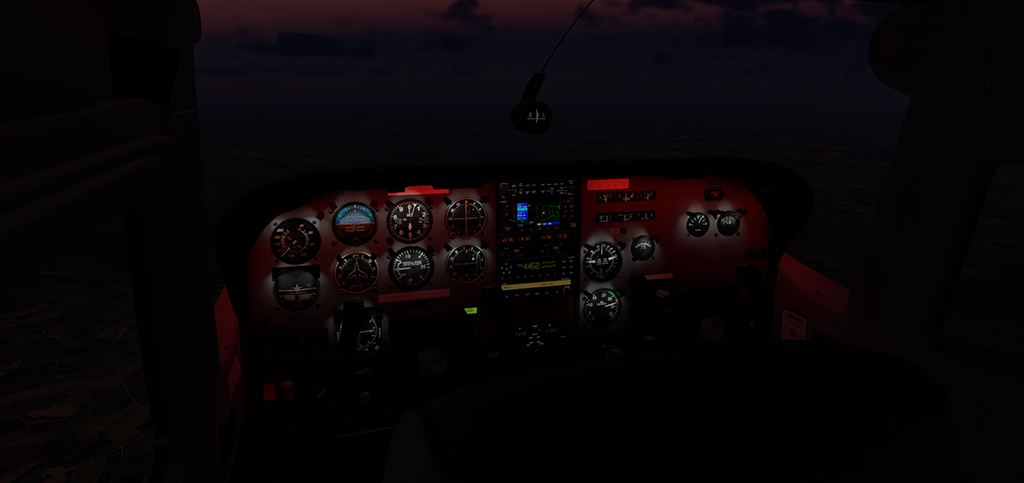Search the Community
Showing results for tags 'thanda design'.
-
NEWS! - Announcement : 337F Skymaster by Thranda Design Certainly one of my favorite aircraft, the push, puller Cessna 337F Skymaster is one of the greatest General Aviation aircraft. After the 208 Caravan, then the excellent U206G Stationair, here is another Cessna classic from Thranda Design, or a Carenado classic. Once the bastion of General Aviation aircraft in Simulation, then what has happened with the famous developer, missing now from X-Plane for a number of years. And how far will Thranda Design go in replacing classic aircraft with the same. The Cessna Skymaster is an American twin-engine civil utility aircraft built in a push-pull configuration. Its engines are mounted in the nose and rear of its pod-style fuselage. Twin booms extend aft of the wings to the vertical stabilizers, with the rear engine between them. The horizontal stabilizer is aft of the pusher propeller, mounted between and connecting the two booms. The combined tractor and pusher engines produce centerline thrust and a unique sound. The Cessna O-2 Skymaster is a military version of the Cessna 337 Super Skymaster. The aircraft includes all the features of the Dynamic Generation Series. Development images are of a highly quality aircraft as you could expect from Thranda. The Cessna U206G Stationair DGS series was priced US$39.95, I would expect the same for the 337F Skymaster... To be released before Christmas, maybe.... fingers crossed, or ask Santa. Images are courtesy of Thranda Design ________________ NEWS! by Stephen Dutton 5th December 2022 Copyright©2022: X-Plane Reviews Disclaimer. All images and text in this review are the work and property of X-PlaneReviews, no sharing or copy of the content is allowed without consent from the author as per copyright conditions) All Right Reserved.
-
Aircraft Review - Cessna U206G Stationair DGS series by Thranda Design Only a few months ago (April 2022) Thanda Design released their version of the Cessna 208 Grand Caravan. It was an interesting release for many reasons. It was a slight departure from their usual rugged utility aircraft series, the Caravan is of course still a working machine, but more tuned to light freight and passenger transfers and tourism... than rugged bush work. More so was the fact that the Cessna Caravan was the all time most successful aircraft sold by Carenado, which meant that Thranda was also moving into Carenado type territory and creating a product that was a very much esteemed by anyone that flew it. This latest U206G release goes more deeper into the earlier Carenado territory, this is really a General Aviation aircraft par excellence from the Cessna 205, 206, and 207 family, all known primarily as the Stationair (and marketed variously as the Super Skywagon, Skywagon and Super Skylane). A family that was originally developed from the popular retractable-gear Cessna 210. The family line combination of a powerful engine, rugged construction and a large cabin has made these aircraft popular bush planes. Cessna describes the 206 as "the sport-utility vehicle of the air." These airplanes are also used for aerial photography, skydiving and other utility purposes. Fitting in perfectly for Thranda's vision. The U206 was originally known as the “Super Skywagon”. From 1970 it was named the “Stationair”, a contraction of “Station Wagon of the Air”, which is a good description of the aircraft's intended role. Sub-variants were designated U206 to U206G. The “U” designation indicated “utility” and this model was equipped with a pilot side door and large clamshell rear door serving the back two rows of seats, allowing easy loading of oversized cargo. The C206G has six seats, is powered by a Continental IO-520-F of 300 hp (224 kW), with a gross weight of 3,600 lb (1,633 kg) landplane, 3,500 lb (1,588 kg) seaplane and was certified on 21 June 1976. Notable is that the Cessna U206G is also the first aircraft from Thranda that is available for X-Plane 12, an X-Plane 11 version is also part of the package if you want to stay over there. But you would be crazy not to as we shall see. Also to note the aircraft being released into the Beta phase of X-Plane 12 (I'm using Beta B4 here), so there may be a few elements or changes until X-Plane 12 goes final. Make no mistake... looking at the Thranda U206G in the virtual flesh in X-Plane 12 is a moment. The instant point that says new era and uber realism. Yes I have given out accolades and breezy breathless descriptions of overwhelming quality and detail in the past. But this is now X-Plane 12 and it comes with all of X-Plane wizzbang dynamics, one image says it all. Look at it, or LOOK at this image... the realism is simply off this world, as you feel the reality of the aircraft, you want to touch it, rub your hands all over that smooth cowling... ... at this point I don't even want to fly the Cessna, but to just absorb it, be with it.... God it's so good. Quality of course has always been around aircraft like this, but X-Plane 12's dynamic lighting creates a very different aspect to the aircraft, certainly one that has been created for the better newer dynamics. Paneling is perfect, panel screws and the extensive riveting is all so perfect, but so is the perfect shaping of the machine as this is peerless modeling. It's filthy as well, dirty, grubby, bloody perfect. Around the shapely rear and under the elevators and I could bore you for ages with accolades. The sheen however on panels is just "beautiful". Glass is excellent as well... there is lovely staining and wear through the glass that gives it all a very realistic look, and notable is the highlighting of the excellent and the same detail that was on the Caravan, it all also gives you a hint of how great the Thranda X-Plane 12 Caravan will be as well, it was great in X-Plane 11 so it should be absolutely brilliant in X-Plane 12. The undercarriage is a Tri-Cycle arrangement with the small rears on sprung arms. Again grotty and dirty, worn and torn, this U206 has had a hard life. Basic braking system on the U206 consists of a single disc, which has a hydraulically actuated brake on each main landing gear wheel. The single nose wheel has the chrome hydraulic centre leg, and again grubby in appearance The Continental IO-520-F of 300 hp (224 kW) is fully modeled here, you can't actually interact with it but the detail is excellent to observe. There are only actually two doors. Well one pilot door and the rear twin-clamshell doors. All are opened by their latches. Clever is that with the clamshell doors if you close the front door first the rear won't close, unless you reopen the earlier door, a nice detail. Cabin The StationAir is a six seater aircraft in three rows. With each row of seating slighly smaller than the one in front. I'm also going to call it, as X-Plane 12's lighting makes it very dark in here, Ben Subnic says it's correct, but I find it just simply too dark to be really realistic. Cabin materials are very light grey upper with a dark blue lower, and the seat inserts are a blue tartan, very smart and it comes with a more modern feel than an earlier model. Oddly the cabin feels very early Carenado, so if you like those styled cabins you will love it in here, of which I do. Cabin roof detail is glorious, strips of metal, hung seatbelts, lighting fittings are all well done. Instrument Panel Again you will find the instrument panel very dark, nearly a black hole and with a grey background here. Worn glareshield is nicely tired with grubby edges that you will want to run your fingers along. Lower panel has a very nice wooden finish that in the right light looks very exclusive but also feels a little dated for a modern cabin. Highlight here are the square block "STATIONAIR" yokes, very authentic and yes they are excellent. You can hide one or both yokes to your own setup for the day, but they cover a lot of the lower switchgear. Oddly there is no radio contact switch on the yoke? Put on the power and it helps to see the instrument panel. You get lit dials and instruments and reflecting red down lighting that looks very nice, this is a very quality made instrument panel (note I later found the optional light posts that did a better panel lighting fill job). Flying instruments (Standard Six), and no flying instruments for the right seat, lower panel has power and starting switch, internal lighting knobs and external lighting rocker switches. Centre are the three push-pull knobs for Throttle, Propeller and MIxture. Tall centre console has both Rudder and Pitch Trim wheels and Cowl Flap lever, on the floor is the fuel tank switch (44.0 GAL per tank). All side cubbys and in-wing air-vents work, as do both the side windows open. Menu Thranda's Menus are very feature rich and highly detailed. There is a popout TAB under the arrow, that can be (mouse) scrolled to hide it, that is if you don't like these sort of items crowding your screen (I don't). The Menu system includes the "Dynamic Generation Series" or DGS, a Thranda speciality feature that takes full advantage of X-Plane's flexibility for in-sim, real-time modifications. As noted the "Menu" Tab (arrow) is far left middle of your screen, this will activate the Pop-Out Menu... The Menu has seven menu tabs in; GENERAL, LIVERY, WEIGHT/BAL, CAMERA, AUDIO/SLEW, PANEL and MISC (Miscellaneous) Menu - General The menu "General" sections covers quite a lot of options, the layout is highly detailed and very comprehensive. General menu selections cover; Electric Tug, Window and Instrument Panel Reflections on/off, Startup Running on/off, GPU on/off, Cargo Pod on/off, Chocks and Brakes on/off. Three selections placed right cover group items, but any one item can be also accessed via "Click Spots" and can be individually selected or hidden via the aircraft graphic. "ALL COVERS" will select engine inlet/outlet covers and pitot cover, "ALL TIE-DOWNS" for rear fuselage and wing tie-downs and "ALL DOORS" for both the cockpit door and rear cabin doors. All EXT - External Lights can be switched on and off as can the ALL INT - Internal lights. The "Electric Tug" that can be used to move the aircraft around on the ground via your joystick (left,right-forward,backwards). Static Items include Engine Inlet covers, Pitot covers and Tie-Downs Cargo pod is nicely detailed and comes with a single opening door, you can also add in baggage. There is built in "Checklist" (lower right menu, arrowed). And very good it is. But also now back here in the red, or the checked green choices you used on the other Thranda aircraft, and not the single white on the Caravan. You can have checklist pop-up or in a window mode and thankfully move it, and scale it even from the very small to the very large. The two lower arrows give navigation around the checklist pages. The action detail and hints in the lists are simply excellent and the checklist is fully detailed from Pre-Flight to Shutdown. And to reset, it is done at the end by switching green back to red. Menu - Liveries Second Menu option is "liveries", there are two options here with the first being "PAINTED LIVERIES". There are altogether 11 liveries or two blank and nine designs and all are of extremely high quality and creative flare with the package. Thranda house is default. Dynamic Liveries Not happy with any of those designs, then why not create your own livery! With their earlier releases of their Kodiak and with the PC-6, PZL-104 and Caravan. Then Thranda introduced a clever feature of a way to design your own livery. This is done by switching from PAINTED LIVERIES to DYNAMIC LIVERIES top. Two liveries are "Dynamic" in resources (White)... another New feature is the (Quick) selection of Dirt (Ext) Externally, Scratches and Dirt (Int) Internally. Via three percentage selections you can adjust the amount of Dirt, Scratches and Dirt Int on the aircraft (0%-255%) and apply it instantly.So you can have either a pristine or a very grubby aircraft with just a twirl of the numbers. This can be applied to any of the liveries. You have a menu to select on the right that can colour a certain part of the aircraft, like the Roof, Wing, Tail or Wing tips. Select which one you want and then adjust the RGB colours for that certain area, it looks hard but you can easily design a very nice livery in about twenty minutes... the selections of Dirt (Ext), Scratches and Dirt (Int). Metal(ness) and surface Rough(ness) can also be added or adjusted as seen earlier... When done you can "SAVE" or ADD the livery and then "APPLY" it to the aircraft. The conversion takes a few minutes, but the results are excellent and in your own design... There are already 30 preselected selections in their various designs, all are very good, and like noted you can add in your own version to the list. New to the Dynamic Livery application is ERA options in "Modern' or "Classic". Of course taste is optional... Menu - Weight/Bal The StationAir also has a great Weight and Balance menu. Lbs and Kgs which can be selected and changed via the toggle Lbs/Kgs (arrowed). The Cargo Pod can be added or removed via the toggle top centre. This then adds in the Cargo Pod weight options on the right. Fuel can be added and the amounts are then shown and are adjustable as well in the menu (above). Pilot, passengers and cargo can all be set for individual weights all selected via a scrollwheel... and then all of the CofG (Centre of Gravity) parameters are all shown on a graph, go too far or too heavy and the CofG goes red. When done you can Save the Configuration and then later re-load it, or press Load to add in the set weights. Add weight into the cargo pod and baggage will fill the lower container. There is the selection of all seats, four seats or two seats (front) and a large space in the rear. Selection is via a X on the box for that seat that you want to remove from the rear cabin. But obviously there is a compromise? If you want a full passenger and baggage load, then you can't have full fuel tanks, as the excess weight takes you over the weight and the CofG limits. For six passengers (with maybe a bag thrown in) then can you have your full tanks and the range and not go into the red. You can really pile a lot into the rear two sections and all the baggage is of very high quality. Adding in passenger weight gives you a pilot (Daniel Klaue) and in the co-pilot seat his wife. There are no rear passengers and both are nicely actively in body and head animated to the controls. Note... if you turn off the aircraft's electrical power or add the chocks to the wheels, then they will both disappear. Menu - Camera There is a camera feature under the menu "Camera" selection. The left side of the panel is the "Walkaround" views, just pick the dot viewpoint you want to see to rotate around the aircraft. To the right is the default views can be selected via a menu, or press the keypad to select the view. The FoV or Field of View is adjustable via a slider. Menu - Audio/Slew Sound can be adjusted via the sound menu. There are seven slider selections with: Master, Aircraft External, Aircraft Internal, CoPilot, Radios, Environmental and User Interface. One other sound setting is on the Flap panel... As noted, on the right and left of the panel you get the audio simulation of an active noise canceling headset, which is seen as wearing a headset. Sound quality is beyond excellent as it is a built in audio mixer, so you can individually control the audio channels in real-time and you can adjust the volumes while hearing them play. Slew mode allows you to manually move the aircraft around in a disconnected X-Plane space. It functions by temporarily overriding the various aerodynamic and physical forces on the X-Plane settings, it is to allow the user to reposition the plane as desired. This feature is however highly touchy and it is mostly used with the floats option (not yet on the StationAir, but on the Caravan, Thranda Beaver and PC-6). Menu - PANEL The sixth "PANEL" Tab option allows you to adjust or change the instruments and dials. First feature here is a new one to Thanda's Dynamic Panel... you can now add in or takeaway the panel "Light Posts". (hint nice on) Scroll the "Panel Preset" number (arrowed) to see the extra six preset layouts (seven choices in all). Sometimes to restart you have to click to "Apply the Settings" for the GPS units. Customising the panel to your own personal layout is just as easy. Just select the "3D EDIT PANEL MODE" (arrowed) that gives you access to all of the 53 individual instruments and avionic units... There some great options including Aspen EFD 1000, S-TEC 55x Autopilot, Angle of Attack gauge and so on... For those that find instruments are not to their liking in say, "I wish I could move that altitude meter just a bit more to the left", then here you can simply adjust that instrument, or even swap the instruments around the panel to your liking. Here I have moved the MAN PRESS/FUEL FLOW gauge over to the right side... because I can. You can even adjust the brightness of the instrument. Optional is to select the type of GPS unit you want GNS 530/430. When done you can "ADD" (or Duplicate) in a new "Preset", and then "SAVE" that new layout Preset (Preset /6). So basically you can start off with a completely blank instrument panel and then create your own unique or personal instrument layout if you have the time and patience... and you can have up to or save 14 different instrument layouts. It is however very important to restart X-Plane to lock in the new instrumentation layout before flying. Currently the optional "Panel Background" choice is not available on the StationAir, like it was on other Thranda DGS systems Panel features include; Bendix King KFC-225, and the noted Aspen EFD 1000, KR 87 ADF Radio, Garmin GMA 340, Garmin GTX325 Mode C Transponder, BendixKing IN-182A Weather Radar and the usual GNS 430/530 PS/Nav/Comm units. And there is a special 3d bezel for the insert of a RealityXp GTN 750 unit if you own that add on. The EFD 1000 which is a self-contained multifunction digital display that is divided into a Primary Flight Display (PFD) in the top half, and an Electric Horizontal Situation Indicator (EHSI) in the lower half. As EDF 1000 systems go it is not as highly featured with the GPSS, MAP, 360 and Menu functions all not simulated... all the lower NAV1/NAV2/GPS selections are however available, as is the TPS (Tapes) see/hide option with the MIN (Minimums) selectable as well. and the PFD can be reversed with the EHSI. The EFD 1000 here can be used with the KFC225 Autopilot. Menu - MISC The Misc (Miscellaneous) page has four panels that cover Fairings ,Tundra, Cargo Pod (again) Windows and DynaFeel. Fairings covers all three wheels, but are not coloured. Available are both Regular and Tundra wheel sizes, as are the rear Mud Flaps Side windows come in two options, Flat and Bubble. "DynaFeel" on the right is a system that dynamically adjusts the rate at which the controls deflect. It is based on airspeed and how much the control is deflected. This means the controls will feel light and responsive at low speeds and with small deflections, but will get progressively heavier as the airspeed increases. Links to both the Support forum for the U206 Stationair by Thranda and to download the built-in Skunkcrafts Updater are also provided _____________________ Flying the Cessna U206G Stationair A lot of users love the twiddly, hard starting, fuel flooding aircraft. Not me sorry, as I want to fly and not be immersed in frustration. If you do the wrong thing trying to start start the U206G, then obviously it won't start. But set the throttle to idle, mixture full up and hit the starter key the Stationair will quickly and easily come to life. Sounds are very good, but also slightly odd. Internally the Continental IO-520-F sounds very good, but externally you get a very "Knock, knock", sound like clapping two coconuts together, is that realistic? Maybe so at low idle and it does get better with the revolutions increasing, but still knocks can be heard over the roar. You have to pull the external sound down to 30% slider to be realistic as it is far too loud at the correct setting? Park brake goes off in the "thunk", and give the U206G a bit of throttle and away you go... my weight is very light here at only 1238 kg, just a pilot and a bag in the back with only 90 kg of fuel in each wing tank (180 kg). You can very easily find that really lovely taxi speed here with a bit of adjustment of the mixture and throttle settings. Note you can now adjust all the pilot and passenger weights and cargo in the newer X-Plane 12 Weights & Balances/Fuel menu. Very quickly you really love the X-Plane 12 dynamics and the refined aircraft condition. With the set mixture then speed adjustment by the throttle can be very fine in adjusting up and down your throttle, so the Stationair is really excellent on the ground. Mixture now full in for take-off, off go the foot-brakes and up the throttle for some power... the engine roars... ... being light the the U206G moves quickly away from the line on EIKY - Kerry's Rwy 08... zoom! your moving and putting the throttle up more and your gathering even more speed quickly, you feel the power and the U206G moves along at quite a clip. There is not much pull to the left either and the aircraft is easy to sit on the centre white lines, so at 90 knts you pull back on the yoke and your easily flying... Sounds are much more improved at full power, I love them a lot as get this great throaty roar. Climb rate is basically 1,000 ft per minute, but I found a little more pitch as the power allowed you to do that without losing speed (again depending on the weight). Your view to the side is highly restricted by the low window, so you feel encased in the aircraft. But there is no doubt about the environmental differences of X-Plane 12 and it's spectacular lighting effects. These images show on how different X-Plane 12 is from the earlier versions of the Simulator. I think the scenery is far more detailed as well as regional Ireland comes across very well and nicely detailed. I'm pretty impressed by the cloud shadows and reflected on the ground as well, but can't see the same on the aircraft? First up to Shannon VOR (SHA - 113.30 MHz)... and soon Shannon comes into view. With earlier circuit flying I found the Strationair from Thranda "putty in my hands". Instantly you know that THIS aircraft is bloody brilliant to fly, trim is easily adjustable and the aircraft will just go where you want it too, bank cleanly, twist, turn, slightly up, slightly down... it's a beautiful thing when it works so well like this. Obviously Thranda have got the X-Plane 12 physics perfectly right. Now over Shannon it is a 67º turn to Dublin and a reset of VOR 2 and the Dublin (DUB - 114.90) which comes up on the VOR pointer that shows I'm on the right track. Sit back and just admire the Stationair in the new dynamic X-Plane 12 lighting, it is absolutely brilliant, but this is still a beta, so expect a bit more adjustment to come. U206G specifications are; Maximum speed 174 mph (280 km/h, 151 kn) at sea level, a Cruise speed of 163 mph (262 km/h, 142 kn) at 6,200 ft (1,900 m) (75% power), a Range of 840 mi (1,350 km, 730 nmi) at 6,500 ft (2,000 m) (max fuel, 45 min reserves) with a Service ceiling of 15,700 ft (4,800 m) Popups are good and clear, obviously there are more than what I am using here. The more you fly in X-Plane 12 the more impressive it gets. Lighting There are the four panel adjustment knobs, but you really need the panel "Light Posts" on to get a really nice panel effect. It is a pretty panel and as usual highly adjustable. There are actually two red glow arrangements. One built into the upper glareshield and a second front to of the window on the roof. A single large light mid-cabin lights up the rear. Externally it is pretty basic lighting... Front in the nose are both landing and taxi lights, navigation and strobe lights on the wingtips, plus a white tail light and up on the top of tail is a red beacon light. Cleared for Dublin's EIDW Rwy 16, I go into a circuit going north, then east. Notable is that the chunky yokes cover the important VOR 2 pointer low down on the left. I think it is an instrument I will have to move... because I can with the DGS System. Final turn puts me on the 159º approach heading. Unusually I am using the APP tool to line up to Rwy 16. There is a slight hill in front of the runway that can hide the runway from a distance... but it a good test of the system as well. A Course Deviation Indicator (CDI) is right in your eyesight and a very hand tool in this position for gauging not only the runway angle, but the ILS cone as well, even if you are landing manually. Flaps here are UP - 10º - 20º (lower right). There is not too much lift from each flap selection, as long as your speeds are mostly consistent with point you select the next phase down and you should end up with an approach speed of say around 70 knts. You had better have the correct approach speed set if you are going to drop the APP A/P and are going over to manual control to land. Wrong and speed set too low will make the aircraft severely drop (as it should) so you need to give it a little bit of a higher power to keep the air going over machine to stay up, once settled in a manual flight you then adjust the approach speed back to resume your descent. Notable here was the westerly wind that caught me out every time, even though I was ready for it? but I soon had the aircraft corrected. Because the U206G is nicely docile in these sort of conditions you can handle them quite easily... Lower the speed under 60 knts (Stall is 63 mph (101 km/h, 55 kn) (flaps down) and a nice slight flare and your down. The Stationair doesn't squirm a lot under braking, which is nice, and loses speed easily. The point to make here overall is the excellent handling characteristics are really so very good. This is a perfect trainer aircraft for realistic training because of these essential traits, it's excellent to fly as well. Summary Earlier this year Thranda Designs released the Cessna 208 Grand Caravan. Here is the U206G Stationair, which you could say is a sort of follow up to the Caravan, after Thranda's earlier more rugged utility aircraft Series. In the name the U206G, means "U" for utility, and "G" for the version including six seats and this aircraft is powered by a Continental IO-520-F of 300 hp (224 kW). Thranda Design are one of the best developers in X-Plane, their history and quality is legendary. So that quality build and detailing is always going to be significant from the start, and so it here... exceptional. In every area and detail, modeling, fine details, glass and the interior materials. Feature list is very high (clever) adaptable cabin seating and baggage options with the required lower Cargo Pod also available. Tundra Tyres, Mud Flaps, Checklists, Wheel Fairing and flat or bubble windows are all here. The Amphibian, Float, Skis versions and even the usual G1000 Avionics will come later in an add on package as per usual by Thranda. Menus are also excellent with menu tabs in; GENERAL, LIVERY, WEIGHT/BAL, CAMERA, AUDIO/SLEW, PANEL and MISC (Miscellaneous), that covers all the options and including sound, weights and balances also including graphs, walk-around and camera options and general static elements including chocks, pitot covers, removable engine cover (with detailed IO-520-F ) and tie-downs. Thranda always comes with a high range of clever and unique features to give the user a lot of personal options. Known as "Dynamic Generation Series" or DGS, this is a Thranda speciality feature that takes full advantage of X-Plane's flexibility for in-sim, real-time modifications. Here you can change the actual livery to your own designs, but build the instrument panel to your own liking as well, including options of the Aspen EFD 1000 glass instrument and a special 3d bezel for the insert of a RealityXp GTN 750 unit if you own that add on. One thing I will note early in this summary is that the biggest feature on this aircraft actually is not from Thranda. It is the new version X-Plane 12. The new lighting and feel of X-Plane 12 brings the aircraft to life in a very different and more realistic way, but notable here in this beta is that internal lighting is also very dark as is in parts of the external lighting, expect those areas to be refined as we run through the beta phase X-Plane 12 dynamics are simply sensational here and a level above in feel and handling, but notable is the sound package, in being very rattly lower and loopy higher revolutions, it's not bad, but like with the Caravan could be a bit better. So it's a Thranda and that is a sale right there and done. But this is also the first Thranda created and developed significantly for X-Plane 12, a new era in simulation and from what I have experienced it is a massive leap forward in real life dynamics and visual appeal. A total winner in every department... and totally recommended. _______________________________ Yes! the Cessna U206G Stationair DGS series by Thranda Design is NOW available from the X-Plane.Org Store here: Cessna U206G Stationair DGS series Price is US$39.95 Requirements X-Plane 12 (still beta at this stage) or X-Plane 11 Windows, Mac or Linux 4 GB VRAM Minimum. 8 GB+ VRAM Recommended Download Size: 1.9 GB Current version 1.0 (September 17th 2022) Special features: FULLY configurable 3D instrument panel. Over 50 instruments to choose from! (Including Aspen EFD 1000, and support for RealityXP 650 and GTN750) Move any instrument to any location on the panel, or even between pilot and copilot's panel! Comes with 6 panel presets, but can easily be expanded by moving instruments around, using a simple and intuitive interface. Enable or disable lighting posts per instrument. Lighting is fully 3D, and dynamically move along with the instruments, as you configure the panel. Ability to assign a lighting index to individual instruments, to allow different lighting knobs to be assigned on a per-instrument basis. Save your own presets, and even share them with the community! Almost every instrument can be popped up or popped out as a 2D floating window! They can be placed on other monitors as well. Instruments can be moved in 3D directly, on a 2D pop-up preview window, or by numerical entry for precise placement. GNS430 and 530 can be swapped out, but a restart of the plane is required, as 430s and 530s are mutually exclusive in terms of compatibility in X-Plane Dynamic livery editor (like in the Kodiak, the Beaver, the Wilga, the Caravan, and the Pilatus PC-6) Full PBR control! Create stunning metallic liveries, or matte, sand-blasted look in mere seconds! Additional control over dirt/scratches, adjustable in real-time to dial in the exact desired amount of wear and tear. Create "virtual" liveries, based on two basic common design layouts (Modern and Classic), and assign any colour to any available paint segment. Quickly create preview of livery in real-time, using intuitive controls. Previews include visualization of metallic materials and dirt overlays. Apply selected livery in real-time, right in the sim, without the need to even touch a 3rd party image editor! Option to change the tail number in real-time, or disable it altogether. (Enter a "space" instead of a callsign number to create a blank tail number.) Easily and quickly create dozens of paint schemes in-sim! Also includes 9 traditionally painted liveries, all visible in a convenient pre-selection preview window. Uses SkunkCrafts Updater. Option to participate in Beta program, via checkbox in SkunkCrafts Updater. Excellent hi-res PBR realistic materials, featuring true-to-life plate deformation and to-the-rivet precision. Fully modelled Continental IO-520-F engine. Feature-rich elegant fly-out menu with the following features: Electric tug, with in-panel controls to move forward/backward at the desired speed, and steer proportionally Control over chocks, individual tie-downs, covers, internal lights, external lights, etc. Option to enable/disable Cargo Pod, with realistically simulated weight, momentum, rotational inertia, and drag characteristics. Option to start up running (all systems ready), or cold-and-dark, for realistic startup procedures, directly from this fly-out menu. Control landing lights, strobes, beacon, and nav lights via fly-out menu Detailed weight and balance manager with visual chart, individual passenger seat weight control, Lbs/KG unit toggle, CG control, external tank control, and the option to save and load configuration. Control individual seat positions, or hide them altogether, to create a hybrid passenger/cargo version. When seats are hidden, cargo fills the space when weight is added via the fly-out menu. Multiple camera snap points, above and beyond what's available by default in X-Plane, so you can perform your walk around checks. Adjust your camera's Field of View without having to go to an X-plane menu, allowing for real-time adjustments. Audio mixer: individually control audio channels in real-time, so you can adjust volumes while hearing them play. Slew control: move your plane around the world, temporarily bypassing flight physics. Includes ground mode and air mode. Dynamic panel control page, with a separate view for the entire panel layout preview, or a per-instrument view, allowing for fine-tuning of instrument position, as well as copy-paste function to quickly replace instruments. Options for landing gear: Tundra tires, mud flaps, wheel pants (fairings) Option to enable bubble windows for pilot and copilot side windows. DynaFeel panel: Dial in precisely how you with for the controls to react as a function of speed. Flight dynamics and systems: Detailed and accurate flight dynamics and weight and balance with the help of multiple real-world active Stationair pilots. This not only gives this aircraft the proper "feel", but also accurate takeoff, climb, cruise, and landing performance. The U206 Stationair is a well-behaved airplane and a very stable IFR platform. Tie-downs and chocks actually keep the plane from moving, even in high winds. DynaFeel: controls that simulate how strongly the control surfaces are affected by oncoming air, and how much strength would be needed to overcome these forces. Advanced FMOD-based sound system: High fidelity, multi-track sounds with smooth, finely tuned transitions (actually having calculated the precise beat frequency for each section, to minimize "muddy" transition sounds), and amazing atmospheric effects. Individual volume control over different aspects of the sound experience, adjustable in real-time (while listening to the sounds) Different sounds for front of plane than for back of plane Panning around the plane in exterior view yields awesome 3D audio effects, including "blade slapping" sound when view is perpendicular to prop Individual buttons and switches in the cockpit each have their own unique sound. Engine has typical cool-down ticking sound, based on engine temperature. Sounds actually give you clues as to what's happening under the hood. Outside wind intensity is affected by slip and AoA. (The more the surface area of the fuselage is hit by oncoming wind, the louder the sounds ___________________________________ Installation and documents: download for the Thranda_C206. is 1.92Gb and the aircraft is deposited in the "General Aviation" X-Plane folder. Full Installation is 2.05Gb Documents supplied are: Changelog.txt Thranda Graphics Settings XP11.pdf Thranda Joystick Settings.pdf Thranda U206G Manual.pdf U206G Performance Charts.pdf X-Plane G430 Manual.pdf X-Plane G530 Manual.pdf There are a huge amount of Documentation provided here, not only for the Thranda U206G including performance charts, reference guides, but also X-Plane/hardware settings and custom and default avionics. All updates are via built-in Skunkcrafts Updater Support forum for the U206 Stationair by Thranda _____________________ Aircraft Review by Stephen Dutton 27th September 2022 Copyright©2022: X-Plane Reviews Review System Specifications: Computer System: Windows - S1700 Core i7 12700K 12 Core 3.60 GHz CPU / 64bit -32 Gb single 1067 Mhz DDR4 2133 - ASUS GeForce GTX 1080 8Gb - Samsung Evo M2 2TB SSD - Sound : Yamaha Speakers YST-M200SP Software: - Windows 10 - X-Plane 12.00B4 (This is a beta review). Plugins: raffic Global - JustFlight-Traffic (X-Plane.OrgStore) US$52.99 : Global SFD plugin US$30.00 : RK Apps XPRealistic v2 - US$34.99 Scenery or Aircraft -EILY - Kerry Ireland by Boundless -EIDW - Airport Dublin V2 by Aerosoft (X-Plane.OrgStore) - US$24.95 (Disclaimer. All images and text in this review are the work and property of X-PlaneReviews, no sharing or copy of the content is allowed without consent from the author as per copyright conditions) All Rights Reserved



